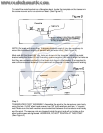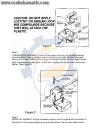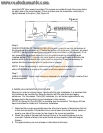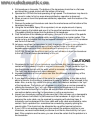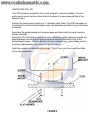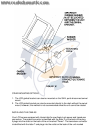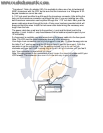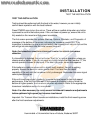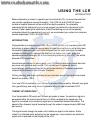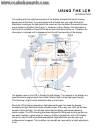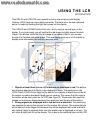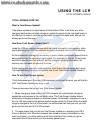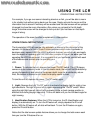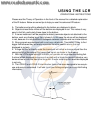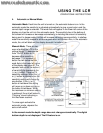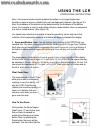
USING THE LCR
INTRODUCTION
Before attempting to install or operate your Humminbird LCR, it is recommended that
you read the operations manual thoroughly. The LCR4-ID and LCR40-ID have a
number of special features not found on other depth sounders. To completely
understand all the features of your unit, we suggest you follow the instructions in this
manual. If after reading the instructions, there is something you do not completely
understand about the operations of your unit, we recommend you contact our customer
service department- CALL (334)687-0503.
INTRODUCTION
Congratulations on selecting the LCR4-ID or LCR40-ID.Your unit uses advanced LCR
technology to make it easy to use and easy to understand so that you will quickly learn
the basics of operating your unit. It also incorporates the most innovative concepts
available for finding fish, making it the first true fish finder ever made. Read this
operations manual thoroughly for all the outstanding features of your LCR. You will be
amazed at its capabilities.
Since there are virtually no moving parts, your LCR will function more trouble free than
any sonar unit you have ever owned. This unit has been engineered, tested,
manufactured, and is guaranteed by the employee/owners of Techsonic Industries,
located on the shores of Lake Eufaula, Alabama.
Fishing, boating, and depth sounders are our business, and at Humminbird we stand
behind our product 100%.
Your new LCR is covered by our Lifetime Guaranteed Service policy. We wish you good
luck, good fishing, and many hours of pleasure with your new Humminbird LCR.
THEORY OF OPERATION
Your Humminbird LCR works on the basic principals of sonar. An electronic signal is
generated within the control head of the unit. When coupled to the transducer, this
signal is converted to an ultrasonic signal and is transmitted toward the bottom. The
speed of the ultrasonic signal traveling through the waters is approximately 4800 feet
per second.
The signal travels through the water until it strikes an object or the bottom. At this
instant it is reflected back, picked up by the transducer, reconverted to an electronic
signal and is recorded on the display of the LCR.



